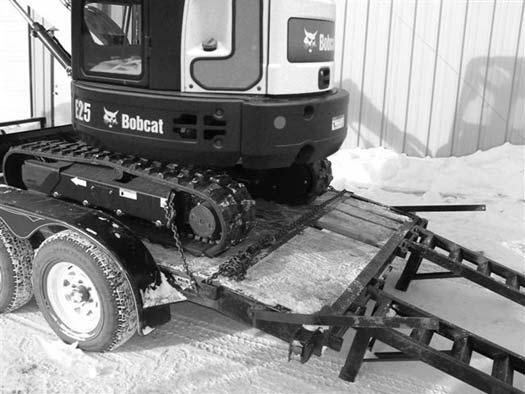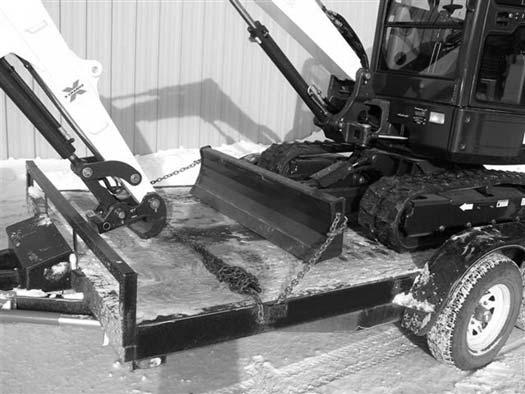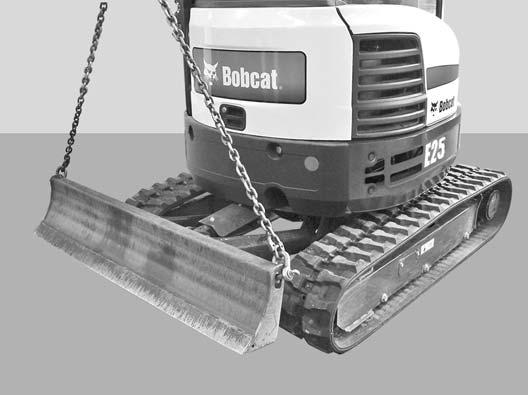
2 minute read
TOWING THE EXCAVATOR
Procedure
There is not a recommended towing procedure for the excavators.
•The excavator can be lifted onto the transport vehicle.
•The excavator can be skidded a short distance for service (EXAMPLE: Move onto a transport vehicle) without damage to the hydraulic system. (The tracks will not turn.) There might be slight wear to the tracks when the excavator is skidded.
•The towing chain (or cable) must be rated at 1.5 times the weight of the excavator. (See Performanceon page152.)
Lifting The Excavator
Procedure
Figure139
Fully extend the cylinders of the bucket, arm, and boom so that the excavator is in the position as shown [Figure139]
Raise the blade all the way.
Put all the control levers in neutral.
Warning
AVOID INJURY OR DEATH
•Use chains and lifting equipment with sufficient capacity for the weight of the excavator plus any added attachments.
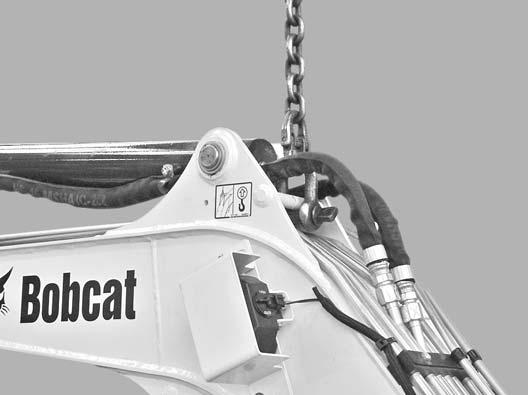
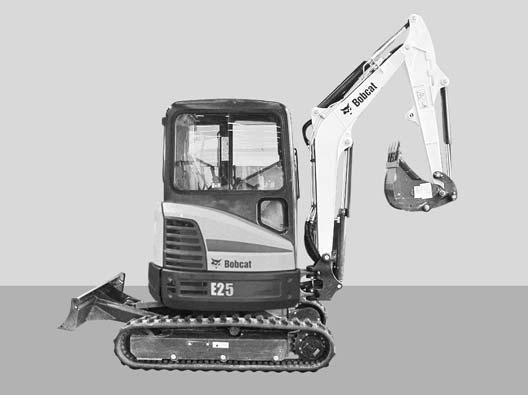
•Maintain centre of gravity and balance when lifting.
•Do not swing boom or upperstructure.
•Never lift with operator on machine.
•Never lift with the blade angled (if equipped). W-2800-EN-0210
Fasten chains to the ends of the blade (Item 1) [Figure139] and [Figure140] and up to a lifting fixture above the canopy / cab. The lifting fixture must extend over the sides of the canopy / cab to prevent the chains from hitting the ROPS / TOPS.
Fasten a chain (Item 1) [Figure141] from the rod to the lift fixture.
Transporting The Excavator On A Trailer
Loading And Unloading
When transporting the machine, observe the rules, motor vehicle laws, and vehicle limit ordinances. Use a transport and towing vehicle of adequate length and capacity.
Secure the parking brakes and block the wheels of the transport vehicle.
Align the ramps with the centre of the transport vehicle. Secure the ramps to the truck bed and be sure ramp angle does not exceed 15 degrees.
Use metal loading ramps with a slip resistant surface.
Use ramps that are the correct length and width and can support the weight of the machine.
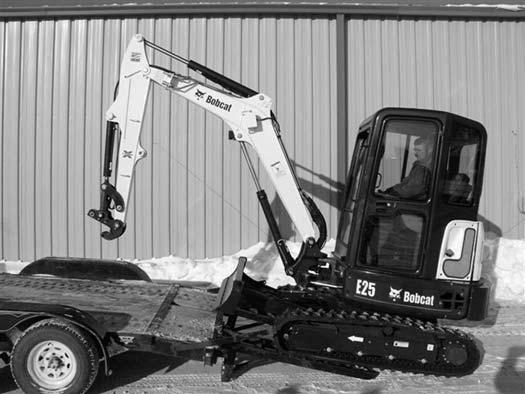
The rear of the trailer must be blocked or supported when loading or unloading the machine to prevent the front of the transport vehicle from raising.
Determine the direction of the track movement before moving the machine (blade forward).
Disengage the auto idle feature and move the two speed travel to the low range position.
Move the machine forward onto the transport vehicle [Figure142]
Do not change direction of the machine while it is on the ramps.
Lower the boom, arm, bucket, and blade to the transport vehicle.
Stop the engine and remove the key (if equipped).
Put blocks at the front and rear of the tracks.
Fasten chains to the front corners of the blade (Item 1) [Figure143] and to the tie down loop at both sides of the track frame (Item 1) [Figure144] to prevent it from moving when going up or down slopes or during sudden stops.
Use chain binders to tighten the chains and then safely tie the chain binder levers to prevent loosening.
Warning
AVOID SERIOUS INJURY OR DEATH
Adequately designed ramps of sufficient strength are needed to support the weight of the machine when loading onto a transport vehicle. Wood ramps can break and cause personal injury.
